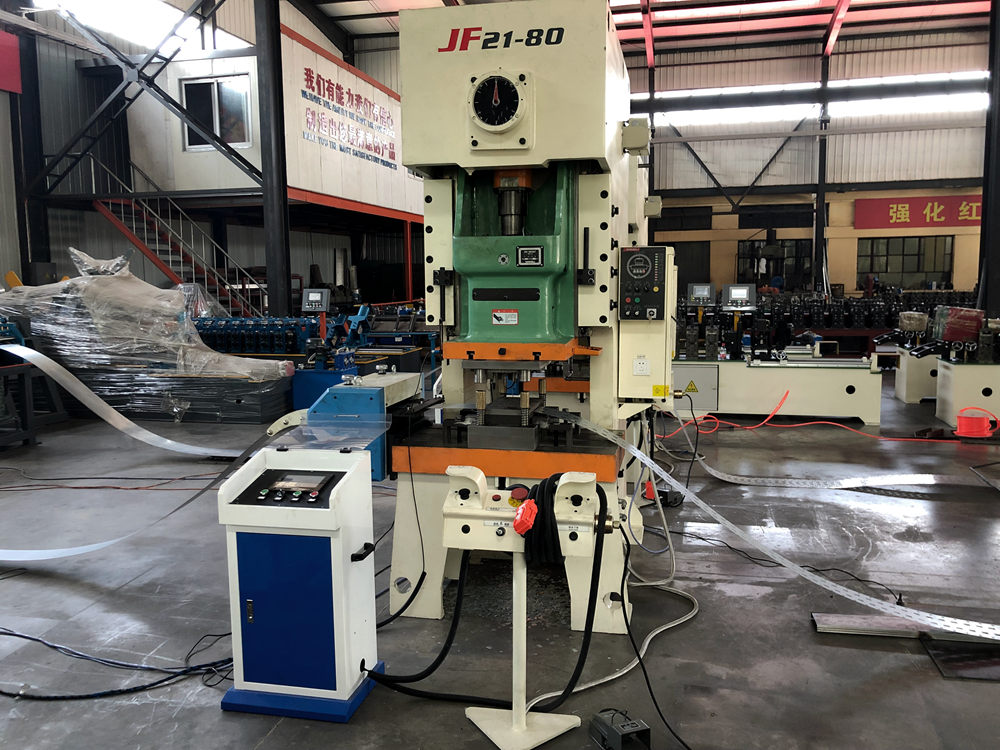
Steel Curving Unistrut Roll Forming Machine Revolutionizing Structural Applications
Steel has long been recognized for its durability and versatility, making it a fundamental material in construction and manufacturing. Among the various applications of steel, the ability to create custom shapes with precision is crucial. This is where the steel curving unistrut roll forming machine comes into play, offering innovative solutions for modern construction needs.
The Evolution of Roll Forming Technology
Roll forming is a manufacturing process that involves feeding metal sheets through horizontal rolls to create specific shapes. This method has evolved significantly over the years, enabling the production of complex profiles that cater to various structural requirements. The introduction of the unistrut roll forming machine has further enhanced the capabilities of roll forming, allowing manufacturers to produce high-quality unistrut channels—essential components used for support and structural framing.
What is a Unistrut?
A unistrut, also known as strut channel, is a versatile support system that provides a foundation for mounting various equipment, piping, and electrical systems. It is characterized by its “C” or “U” shaped profile, which can be easily cut and joined to create a robust structure. Unistruts are widely used in commercial and industrial settings, where they are integral to the installation of HVAC systems, electrical conduits, and other applications requiring reliable support.
Benefits of Steel Curving Unistrut Roll Forming Machines
1. Enhanced Versatility One of the key advantages of a steel curving unistrut roll forming machine is its ability to produce curved unistrut channels. This innovation allows for greater design flexibility, enabling engineers and architects to implement creative solutions in their projects. Curved structures not only look aesthetically pleasing but also distribute loads more evenly, enhancing structural integrity.

2. Precision and Consistency Roll forming machines are designed for high precision, ensuring that each piece produced meets exact specifications. This consistency is crucial for projects requiring large quantities of unistrut channels, where any deviation can lead to structural issues or increased costs.
3. Cost Efficiency Producing curved unistrut channels through traditional methods can be labor-intensive and prone to errors. The automated processes of a roll forming machine reduce labor costs and increase production speed, offering substantial savings for manufacturers. Additionally, the reduced waste due to precise cuts and shapes further enhances cost efficiency.
4. Automation and User-Friendliness Modern steel curving unistrut roll forming machines are often equipped with advanced automation features. Operators can easily program these machines to produce various profiles with minimal manual intervention. This user-friendly technology not only simplifies operations but also allows for quick adjustments to accommodate different project requirements.
5. Durability and Strength Steel is renowned for its strength-to-weight ratio, making it an ideal material for structural applications. The roll forming process, combined with the inherent properties of steel, results in finished products that are both lightweight and incredibly strong. This balance is essential for construction projects where structural integrity is paramount.
Applications of Curved Unistrut Channels
The use of curved unistrut channels is expanding across various sectors. In commercial construction, they are essential for building frames that support large roofs or ceilings. In industrial environments, curved unistrut systems can be employed for mounting heavy machinery, allowing for efficient workflow and maximizing space. Furthermore, the aesthetic appeal of curved channels makes them suitable for architectural applications, enhancing the visual allure of buildings.
Conclusion
In conclusion, the steel curving unistrut roll forming machine represents a significant advancement in the manufacturing of structural support systems. Its ability to produce high-quality, curved unistrut channels with precision and efficiency is transforming how industries approach design and construction. As the demand for innovative building solutions continues to grow, this technology will play a vital role in shaping the future of structural engineering. The fusion of advanced roll forming techniques with the robust properties of steel not only fulfills current construction needs but also sets the stage for lasting sustainability and versatility in the sector.